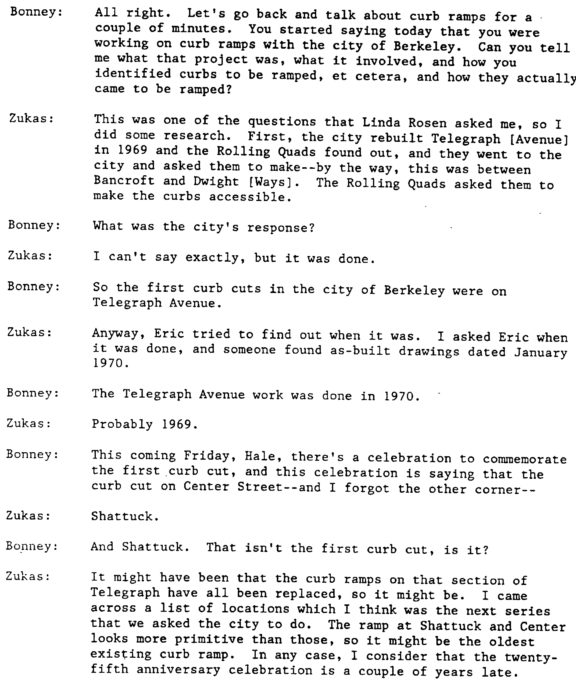Hale Zukas demonstrated, from the late-1960s on, an awe-inspiring commitment to build an accessible frontier throughout the independent living movement.
In this oral history, Zukas recounts Berkeley’s early implementation of sloped curb ramps on street corners and his involvement as coordinator for community affairs for the Center for Independent Living (CIL). Zukas recalled that the first official curb ramps appeared on the first four blocks on Telegraph Ave between Bancroft Way and Dwight Ave and were engineered with universal awareness of overlapping disabilities. Realizing the value of his “expert knowledge,” the city of Berkeley adopted Hale’s ramp design before the existence of any state accessibility standards.
As Zukas explained, “First, the city rebuilt Telegraph [Avenue] in 1969 and the Rolling Quads found out, and they went to the city and asked them to make–by the way, this was between Bancroft and Dwight [Ways]. The Rolling Quads asked them to make the curbs more accessible…I developed a curb ramp design that was used by the city for ten years or so, and until they adopted the design in Title XXIV*. And for a few years they developed a list of curb ramps which they submitted to me for approval….As part of our cross-disability consciousness with curb ramps, curb ramps were put outside the crosswalk. So there would continue to be a curb in the regular path of travel to alert blind people that they were about to step into the street.”
*Title 24 of the California Code of Regulations (CCR) refers to California’s Building Standards Codes which standardized accessibility requirements.
